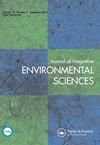循环经济与从摇篮到摇篮的教育实践
IF 3.5
4区 环境科学与生态学
Q3 ENVIRONMENTAL SCIENCES
Journal of Integrative Environmental Sciences
Pub Date : 2018-01-01
DOI:10.1080/1943815X.2018.1471724
引用次数: 40
摘要
本文介绍了循环经济(CE)和从摇篮到摇篮(C2C)在大学教学中的应用,以解决这些框架在实践中的优缺点。概述了这些激进变革框架的优点,包括它们强调升级回收而不是再循环(降级回收)。本文讨论了学生如何将他们对变革生产框架的理解应用到产品或材料的三个案例研究中。学生项目评估现有产品的循环价值概述了一些实践和理论挑战。案例研究表明,一些产品要在封闭系统内实现材料的完全循环,还有很长的路要走。除了说明颠覆循环框架对“一切照旧”情景的危险之外,作业在展示如何成功教授CE/C2C方面具有指导意义。本文建议的教学策略包括可持续生产理论和可持续性以及对公司运营的实践研究,以培养学生有意义地参与CE/C2C模型的能力。本文章由计算机程序翻译,如有差异,请以英文原文为准。
Circular economy and Cradle to Cradle in educational practice
Abstract This article describes how Circular Economy (CE) and Cradle to Cradle (C2C) can be used in university teaching to address these frameworks’ strengths and weaknesses in practice. The advantages of these frameworks for radical change are outlined, including their emphasis on upcycling rather than recycling (downcycling). This article discusses how students apply their understanding of transformative production frameworks to three case studies of products or materials. The student projects evaluating existing products in terms of their circularity value outline a number of practical as well as theoretical challenges. The case studies demonstrate that some products still have a long way to go to fully cycle materials within a closed system. Aside from illustrating the dangers of subversion of circular frameworks to the ‘business-as-usual’ scenarios, the assignments are instructive in showing how CE/C2C can be successfully taught. This article recommends pedagogical strategies involving both theory of sustainable production and sustainability and practical research into company’s operations in order to develop the students’ ability to meaningfully engage with CE/C2C models.
求助全文
通过发布文献求助,成功后即可免费获取论文全文。
去求助
来源期刊

Journal of Integrative Environmental Sciences
ENVIRONMENTAL SCIENCES-
CiteScore
3.90
自引率
0.00%
发文量
13
审稿时长
>12 weeks
期刊介绍:
Journal of Integrative Environmental Sciences (JIES) provides a stimulating, informative and critical forum for intellectual debate on significant environmental issues. It brings together perspectives from a wide range of disciplines and methodologies in both the social and natural sciences in an effort to develop integrative knowledge about the processes responsible for environmental change. The Journal is especially concerned with the relationships between science, society and policy and one of its key aims is to advance understanding of the theory and practice of sustainable development.
 求助内容:
求助内容: 应助结果提醒方式:
应助结果提醒方式:


